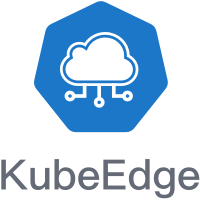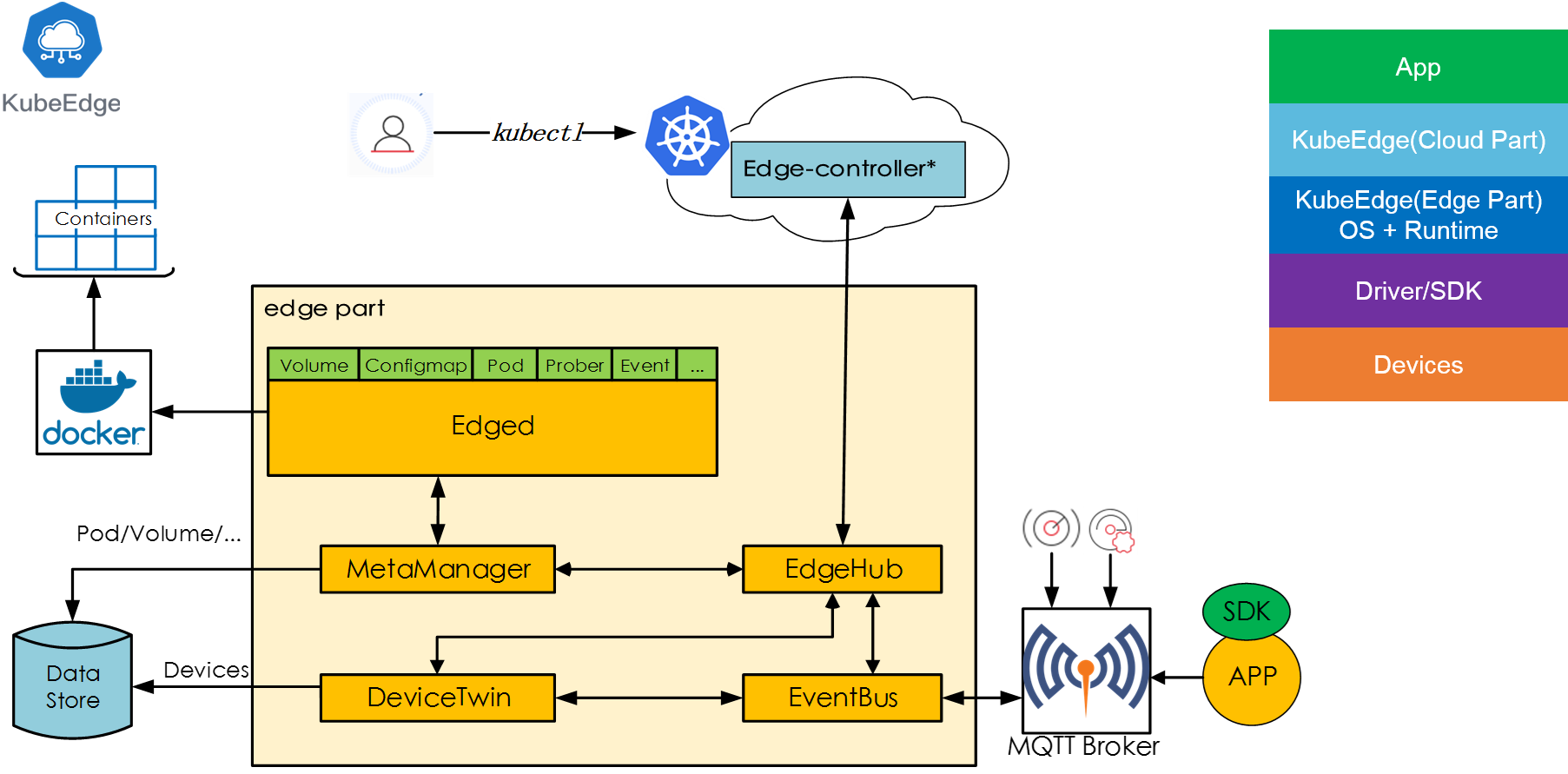KubeEdge is an open source system extending native containerized application orchestration and device management to hosts at the Edge. It is built upon Kubernetes and provides core infrastructure support for networking, application deployment and metadata synchronization between cloud and edge. It also supports MQTT and allows developers to author custom logic and enable resource constrained device communication at the Edge. Kubeedge consists of a cloud part and an edge part. The edge part has already been open sourced and the cloud part is coming soon!
With business logic running at the Edge, much larger volumes of data can be secured & processed locally where the data is produced. This reduces the network bandwidth requirements and consumption between Edge and Cloud. This increases responsiveness, decreases costs, and protects customers' data privacy.
Developers can write regular http or mqtt based applications, containerize these, and run them anywhere - either at the Edge or in the Cloud - whichever is more appropriate.
With KubeEdge, users can orchestrate apps, manage devices and monitor app and device status on Edge nodes just like a traditional Kubernetes cluster in the Cloud
It is easy to get and deploy existing complicated machine learning, image recognition, event processing and other high level applications to the Edge.
KubeEdge is composed of the following components:
- Edged: an agent that runs on edge nodes and manages containerized applications.
- EdgeHub: a web socket client responsible for interacting with Cloud Service for the edge computing (like Edge Controller as in the KubeEdge Architecture). This includes syncing cloud-side resource updates to the edge, and reporting edge-side host and device status changes to the cloud.
- EventBus: an MQTT client to interact with MQTT servers (mosquitto), offering publish and subscribe capabilities to other components.
- DeviceTwin: responsible for storing device status and syncing device status to the cloud. It also provides query interfaces for applications.
- MetaManager: the message processor between edged and edgehub. It is also responsible for storing/retrieving metadata to/from a lightweight database (SQLite).
KubeEdge will provide the fundamental infrastructure and basic functionality for IOT/Edge workloads. This includes:
- An open source implementation of the cloud part.
- Kubernetes application deployment through kubectl from Cloud to Edge nodes.
- Kubernetes configmap and secret deployment through kubectl from Cloud to Edge nodes and their applications.
- Bi-directional multiplexed network communication between Cloud and Edge nodes.
- Kubernetes Pod and Node status querying with kubectl at Cloud with data collected/reported from the Edge.
- Edge node autonomy when disconnected, and automatic post-reconnection recovery to the Cloud.
- Device twin and MQTT protocol for communication between IOT devices and Edge nodes.
- Istio-based service mesh across Edge and Cloud.
- Enable function as a service at the Edge
- Support more types of device protocols to Edge nodes such as AMQP, BlueTooth, ZigBee, etc.
- Evaluate and enable much larger scale Edge clusters with thousands of Edge nodes and millions of devices.
- Enable intelligent scheduling of applications to large scale Edge clusters.
To use KubeEdge, you will need to have docker installed. If you don't, please follow these steps to install docker.
For Ubuntu:
# Install Docker from Ubuntu's repositories:
apt-get update
apt-get install -y docker.io
# or install Docker CE 18.06 from Docker's repositories for Ubuntu or Debian:
apt-get update && apt-get install apt-transport-https ca-certificates curl software-properties-common
curl -fsSL https://download.docker.com/linux/ubuntu/gpg | apt-key add -
add-apt-repository \
"deb [arch=amd64] https://download.docker.com/linux/ubuntu \
$(lsb_release -cs) \
stable"
apt-get update && apt-get install docker-ce=18.06.0~ce~3-0~ubuntuFor CentOS:
# Install Docker from CentOS/RHEL repository:
yum install -y docker
# or install Docker CE 18.06 from Docker's CentOS repositories:
yum install yum-utils device-mapper-persistent-data lvm2
yum-config-manager \
--add-repo \
https://download.docker.com/linux/centos/docker-ce.repo
yum update && yum install docker-ce-18.06.1.ceKubeEdge uses MQTT for communication between deviceTwin and devices. KubeEdge supports 3 MQTT modes:
- internalMqttMode: internal mqtt broker is enabled
- bothMqttMode: internal as well as external broker are enabled
- externalMqttMode: only external broker is enabled
Use mode field in edge.yaml to select the desired mode
To use kubeedge in double mqtt or external mode, you will need to have mosquitto installed. If you do not already have it, you may install as folllows.
For Ubuntu:
apt install mosquittoFor CentOS:
yum install mosquittoSee mosquitto official website for more information.
Clone KubeEdge
git clone https://github.com/kubeedge/kubeedge.git $GOPATH/src/github.com/kubeedge/kubeedge
cd $GOPATH/src/github.com/kubeedge/kubeedge/edge
make # or `make edge_core`KubeEdge can also be cross compiled to run on ARM based processors. Please click Cross Compilation for the instructions.
# run mosquitto
mosquitto -d -p 1883
# run edge_core
# `conf/` should be in the same directory as the binary
./edge_core
# or
nohup ./edge_core > edge_core.log 2>&1 &If you are using HuaweiCloud IEF, then the edge node you created should be running (check it in the IEF console page).
make edge_testTo run unit tests of a package individually
export GOARCHAIUS_CONFIG_PATH=$GOPATH/src/github.com/kubeedge/kubeedge/edge
cd <path to package to be tested>
go test -v
make edge_integration_testPlease find the link to use cases of intergration test framework for kubeedge
Slack channel:
Users can join this channel by clicking the invitation link.
Please find link for detailed information about individual modules of KubeEdge. You can also find the guides for trying kubeedge with IEF.
If you have questions, feel free to reach out to us in the following ways:



